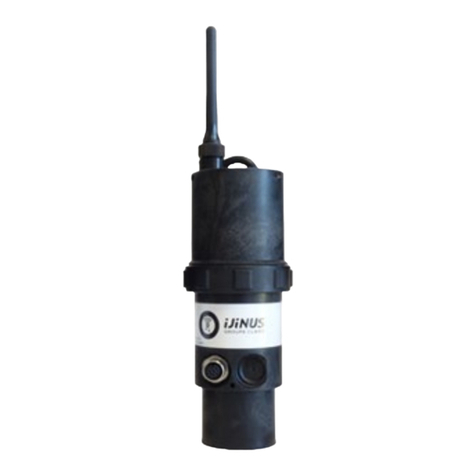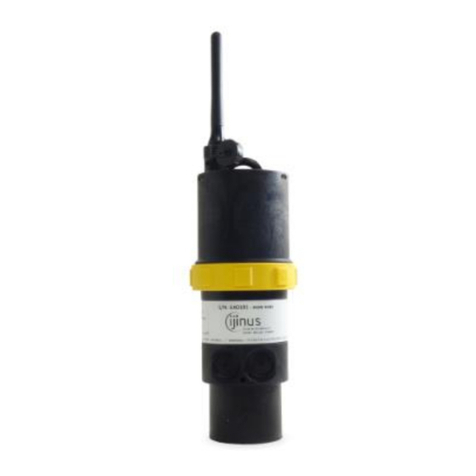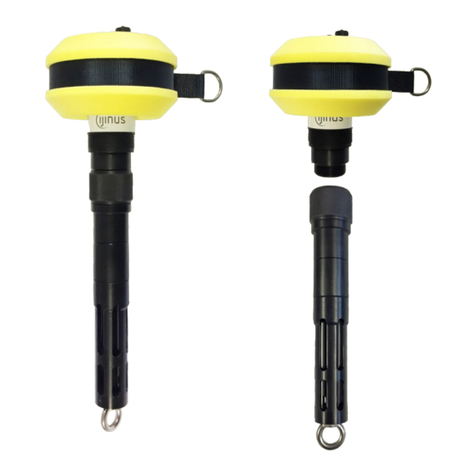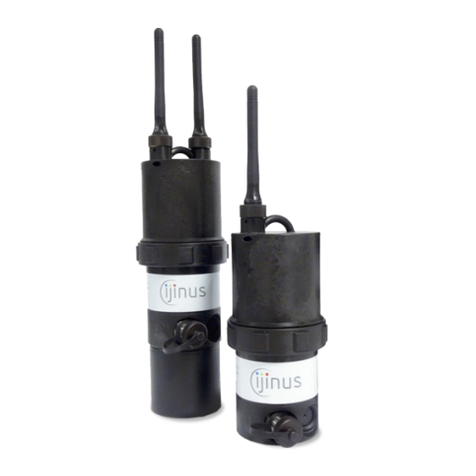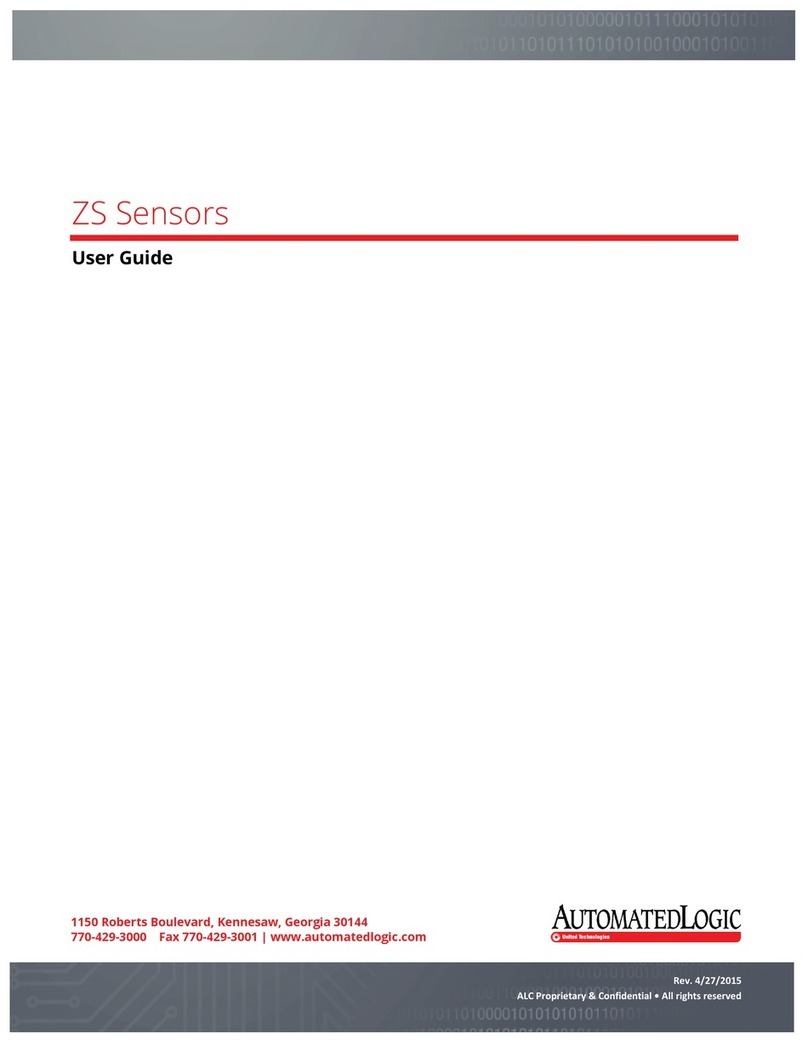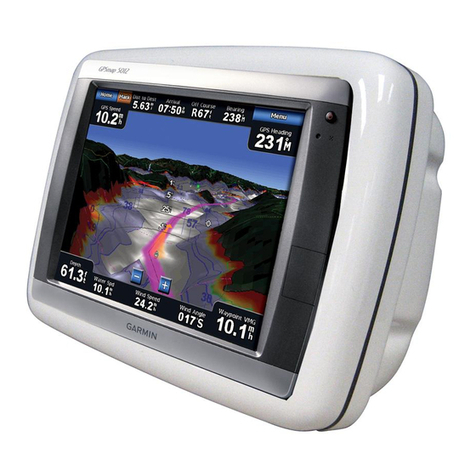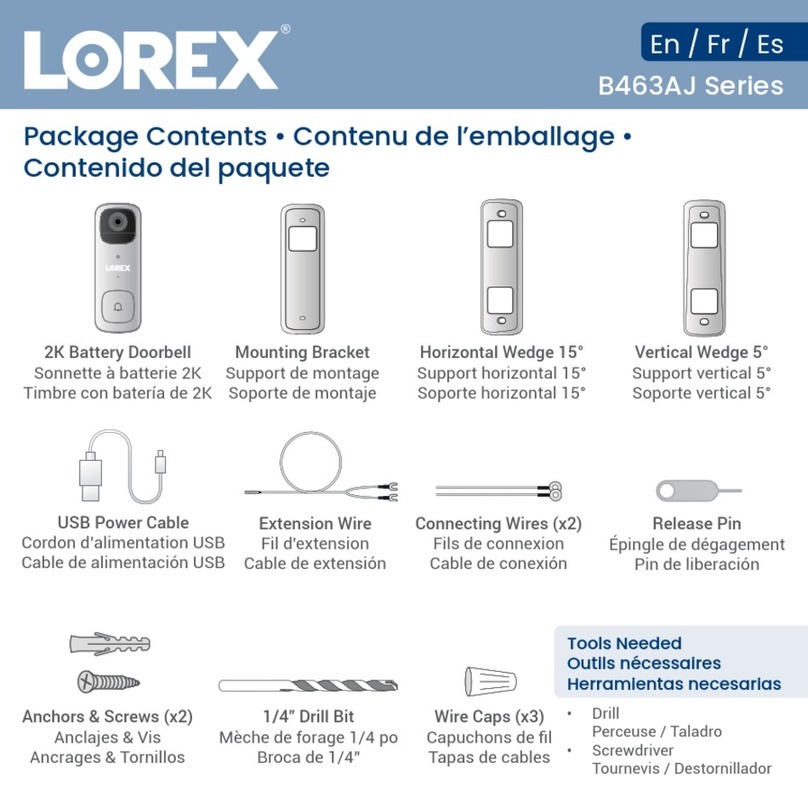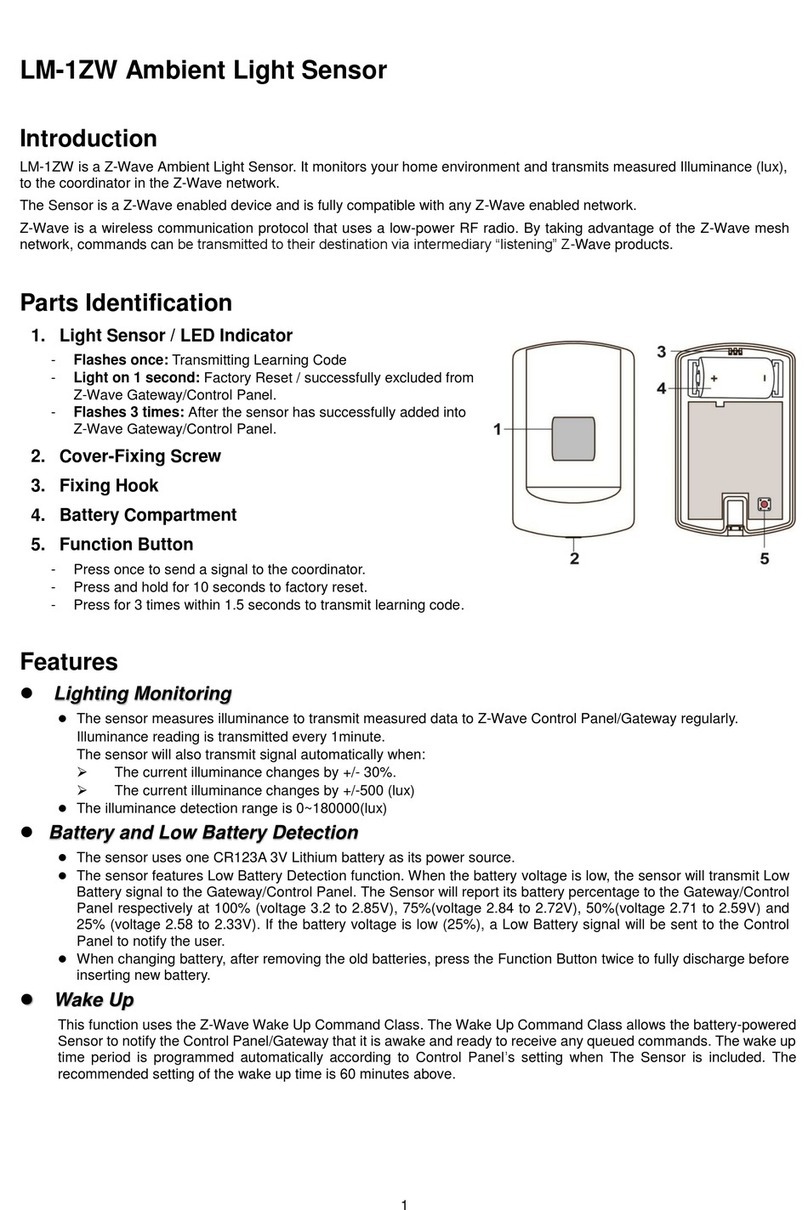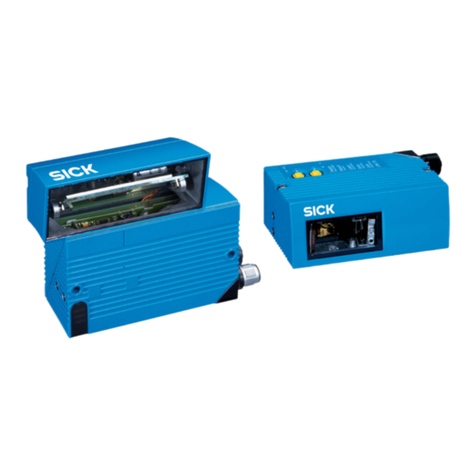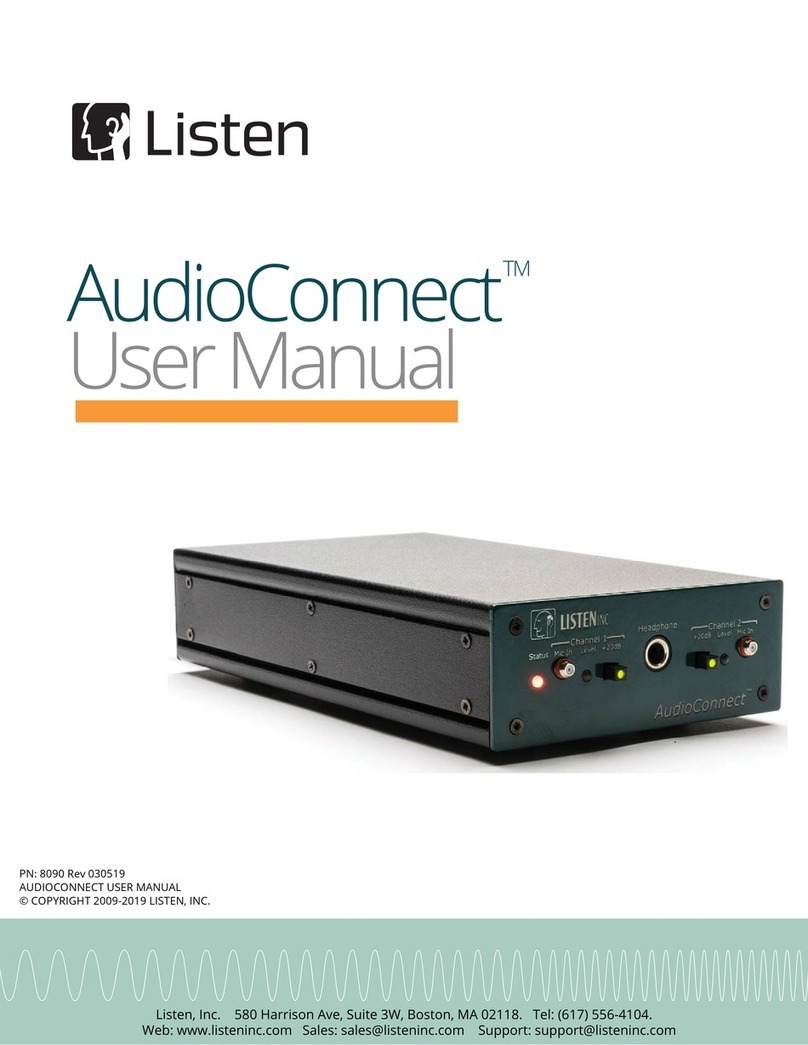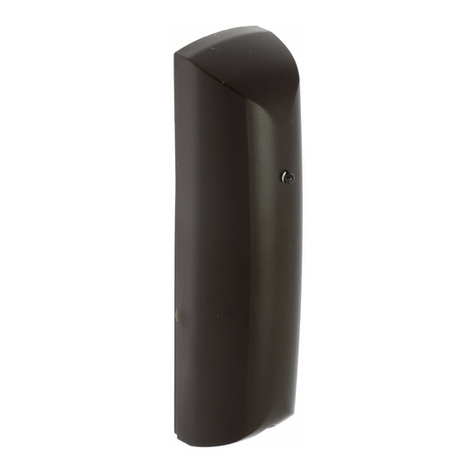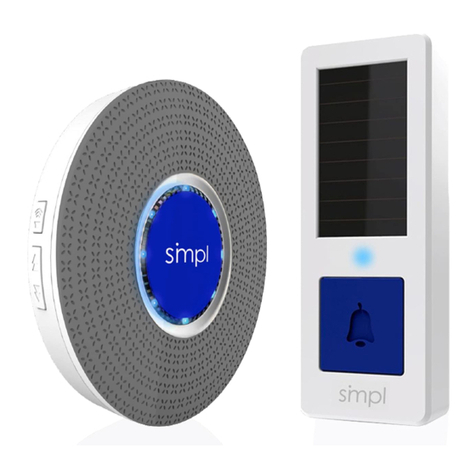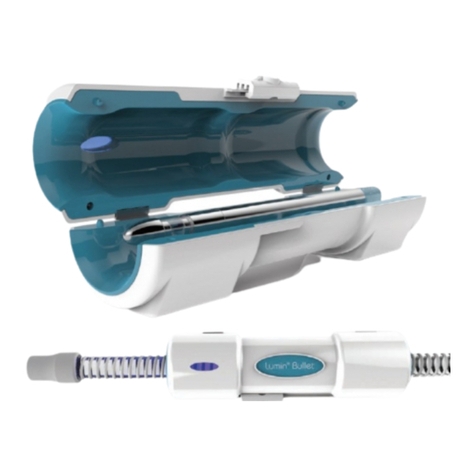Ijinus LNU06V4 User manual

Installation Guide
Battery powered ultrasonic level sensors
Measurement of water heights

LNU sensor : Installation & programming
Installation Guide
K0J00016
-
EN
-
A0
2
IJINUS – 25 ZA de Kervidanou 3 – 29300 MELLAC – FRANCE - www.ijinus.com - [email protected]m 2
Table of contents
Table of contents ............................................................................................................................................................... 2
1. Introduction .................................................................................................................................................................... 3
2. Three main ranges of measurements (depending on max distance to measure) ....................................................... 3
3. Equipment (4 configuration examples) ......................................................................................................................... 4
a. Temporary Installation................................................................................................................................................ 4
b. Permanent installation of a unique level sensor (continuous monitoring or self-monitoring of water networks) ... 5
c. Permanent installation of several level sensors and a logger (continuous monitoring or self-monitoring of water
networks): ........................................................................................................................................................................... 5
d. Other configurations. .................................................................................................................................................. 5
4. Quick configuration with the software Avelour ........................................................................................................... 6
a. Necessary equipment ................................................................................................................................................. 6
a. Prerequisite ................................................................................................................................................................. 6
b. First step: Run Avelour and connect to the sensor to configure ................................................................................ 7
c. Second step: Selection of the sensor to configure, a firmware update could potentially be suggested ................... 7
d. Third step: Level Measurement Configuration ........................................................................................................... 8
Calibration of the sensor Case N°1 (Ideal) ........................................................................................................................ 11
Calibration of the sensor Case N°2 (Classic example of a manhole with an invert channel) ........................................... 12
Calibration of the sensor Case N°3 (complex) – Expert mode .......................................................................................... 14
e. Fourth step: Data reading in real time...................................................................................................................... 19
f. Fifth Step: Retrieve and see locally your data by radio ............................................................................................ 19
g. Sixth step: Data export ............................................................................................................................................. 20
h. Seventh step: Pair devices ........................................................................................................................................ 20
i. Eighth step: Data sending ......................................................................................................................................... 21
5. Elements for good practice and installation examples ............................................................................................... 24
6. Procedure for inserting the SIM card .......................................................................................................................... 26
7. Procedure for changing the internal battery .............................................................................................................. 27
8. Document History ........................................................................................................................................................ 28

LNU sensor : Installation & programming
Installation Guide
K0J00016
-
EN
-
A0
2
IJINUS – 25 ZA de Kervidanou 3 – 29300 MELLAC – FRANCE - www.ijinus.com - [email protected]m 3
1. Introduction
This Ijinus product unites ultrasonic water height measurement, with automatic measurement cycle changes
depending on threshold values and flow rate transformation through conversion tables. Some sensors are
equipped with connectors for coupling with an overflow detector or to control water sampler.
In addition to measuring, these sensors can also be paired with others or serve as data concentrators by 2G/3G or
2G/4G (LTE-M/NB-IoT).
2. Three main ranges of measurements (depending on max distance to measure)
LNU06V4
Measure up to 6m
LOG10V4
Measure up to 10m
External ultrasonic
probe

LNU sensor : Installation & programming
Installation Guide
K0J00016
-
EN
-
A0
2
IJINUS – 25 ZA de Kervidanou 3 – 29300 MELLAC – FRANCE - www.ijinus.com - [email protected]m 4
For example, the figure below shows the diameter of the area that will be studied by two probes models (6 and
10m) as a function of the distance:
3. Equipment (4 configuration examples)
a. Temporary Installation
The sensor is autonomous, and battery powered (lithium battery), it measures water level by air ultrasonic
waves. It has internal logger and data can be retrieved on-site (with radio using the programming kit: Wiji).
Fixations: Bracket, fixations either with single
or double metal plate with bracket
Ultrasonic sensor
Lithium
battery
Programming kit
Water sampler cable
Overflow detector

LNU sensor : Installation & programming
Installation Guide
K0J00016
-
EN
-
A0
2
IJINUS – 25 ZA de Kervidanou 3 – 29300 MELLAC – FRANCE - www.ijinus.com - [email protected]m 5
b. Permanent installation of a unique level sensor (continuous monitoring or self-monitoring of
water networks)
For battery powered level measurement (replaceable lithium) and cellular communication (2G, 3G or 4G depending on
the sensor).
Sensor integrating a logger, cellular communication modem and its external antenna
c. Permanent installation of several level sensors and a logger (continuous monitoring or self-
monitoring of water networks):
For battery powered level measurement (replaceable lithium) and short-range radio communication used with a
second logger to retrieve the data and send them out with cellular communication.
Data logger as a radio/3G access point
d. Other configurations.
Currently, the available communication protocols for the Ijinus devices are the following:
- Radio for a HF configuration and data retrieval: Wiji protocol
- Wireless communication for remote data monitoring: 2G, 3G, LTE-M and NB-IoT
- Wired communication with a PLC: Modbus RS 485

LNU sensor : Installation & programming
Installation Guide
K0J00016
-
EN
-
A0
2
IJINUS – 25 ZA de Kervidanou 3 – 29300 MELLAC – FRANCE - www.ijinus.com - [email protected]m 6
4. Quick configuration with the software Avelour
We will show here the most common way to program the system for level measurement and data sending by
cellular communication.
a. Necessary equipment
- The software Avelour in 7.0 version minimum
- Programing Wiji kit or Wiji key
Avelour
Wiji
kit
Wiji
key
a. Prerequisite
- The equipment should be functional, with a working battery.
- All indications contained in this document refers to programming using Avelour 7.0 minimum

LNU sensor : Installation & programming
Installation Guide
K0J00016
-
EN
-
A0
2
IJINUS – 25 ZA de Kervidanou 3 – 29300 MELLAC – FRANCE - www.ijinus.com - [email protected]m 7
b. First step: Run Avelour and connect to the sensor to configure
After connecting the Wiji kit equipped with its antenna (or the Wiji key) on your laptop or PC USB port, run
Avelour software. Click the button “Connect to a wireless device”. The sensor or logger will be directly visible by
its part number (SN) without the need to activate anything else (ex: IJA0101-0000 3559). Locate the sensor's
serial number (SN) on the sensor label and click "OK".
On the first connection with the sensor only the serial number will appear. During the next connections you will
also see the name of the installation site or another name that you have previously defined.
c. Second step: Selection of the sensor to configure, a firmware update could potentially be
suggested
During its connection with the sensor, the following pop up appears:
When connected, and only if the sensor already has measures in its memory, the following options will suggest
you retrieve the data:
After this, if the sensor is not up to date (case of new firmware developed since your last connection or you are
now connected with a new version of the software Avelour). It is strongly recommended to read carefully the
different messages in the options windows.
The firmware update can take 7 to 12 minutes. It is advised to do it while in your office. On-site, prefer the best
radio connection (avoid the closed metal cover of a manhole).

LNU sensor : Installation & programming
Installation Guide
K0J00016
-
EN
-
A0
2
IJINUS – 25 ZA de Kervidanou 3 – 29300 MELLAC – FRANCE - www.ijinus.com - [email protected]m 8
When the sensors are ready, Avelour will look like bellow:
d. Third step: Level Measurement Configuration
This part is divided in several paragraphs. Each step will be detailed.
General information
This part is useful to describe the measurement point. The most important information would be the name that
will help you to find your sensor for future connections.
Measures
Choice of the application to be configured
This part is the most important, it allows you to configure your sensor.
The simplest way is to click on the button “Add”, then choose “Water height”.

LNU sensor : Installation & programming
Installation Guide
K0J00016
-
EN
-
A0
2
IJINUS – 25 ZA de Kervidanou 3 – 29300 MELLAC – FRANCE - www.ijinus.com - [email protected]m 9
Choice of the measure period
In this new menu, select the measure period (in this example every 5min).
To the right of the measure period selector, 2 little icons allowing a deferred programming according to the
period and day of the week you can choose from. The sensor is not yet calibrated.
Calibration of the water height
After clicking on the “Calibrate” button the following window appears

LNU sensor : Installation & programming
Installation Guide
K0J00016
-
EN
-
A0
2
IJINUS – 25 ZA de Kervidanou 3 – 29300 MELLAC – FRANCE - www.ijinus.com - [email protected]m 10
It is difficult to establish rules but globally 3 cases may arise:
CASE 1: Ideal case: unique echo (test in lab or if the sensor faces flat water surface for example)
A simple calibration will be possible.
CASE 2: Case of a classic manhole with an invert channel at the bottom. The figure bellow shows two echoes (the
invert channel and the water). An advanced mode calibration will be possible. First check that the sensor is well
positioned, facing and perpendicular to the water.

LNU sensor : Installation & programming
Installation Guide
K0J00016
-
EN
-
A0
2
IJINUS – 25 ZA de Kervidanou 3 – 29300 MELLAC – FRANCE - www.ijinus.com - [email protected]m 11
CASE 3: Complex case
The presence of many echoes makes the simple calibration inappropriate. The best option is to move the sensor if
possible. Otherwise go to the expert mode. (Only for experienced users).
Calibration of the sensor Case N°1 (Ideal)
The first case presenting only one echo, you only need to adjust the water height H or the maximal distance
between the sensor and the bottom Z and relaunch a measure. Note that it is possible to define a different zero
point (zero at the level of an overflow threshold for example), very useful for stormwater overflows.
Sensor zero-point (example of ideal case) – On the right a different zero-point
Once done, the calibration must be confirmed by clicking on “Apply” button. The configuration is then
automatically saved in a file called “configuration”. This file can be found within the software even when
disconnected from the sensor.
To be noted: the echo figure includes a power indicator, showed as a yellow dot line (oblique from left to right).
This one is very useful to fine tune the sensor. The echo should ideally be above that line. A weak echo means
the measurement is not precise. An echo that is too high provides accurate measures but uses more energy. A
temperature check during the measure also must be done (here 23°C at the bottom of the graph). Although the
measure is temperature compensated, you should not calibrate a sensor when the temperature is too high and
then ask it to measure on a different environment (typical case of 15°C under a sewer manhole).

LNU sensor : Installation & programming
Installation Guide
K0J00016
-
EN
-
A0
2
IJINUS – 25 ZA de Kervidanou 3 – 29300 MELLAC – FRANCE - www.ijinus.com - [email protected]m 12
Calibration of the sensor Case N°2 (Classic example of a manhole with an invert channel)
In case no. 2, with an echo having several peaks, the software indicates the presence of "critical" obstacles that can
disturb the measurement if the sensor remains in simple calibration. These critical obstacles appear in red on the graph,
while the echo reported by the sensor as the measurement is shown in green. The power indicator is still present.
In this case, follow the following procedure:
- Activate the advance mode by clicking on the button at the top,
The software displays a more precise first stage of calibration named “Measures parameters”: This parameter allows to
extend the exclusion area corresponding roughly to the dead band of the sensor. This parameter is to be modified,
mainly in the case of 0-6m probes if there are interfering echoes in this zone, or in the case of a probe mounted on an
angular return bracket. The manipulation consists in increasing the area of the pink zone, so it covers the different peaks
for distances close to the probe.

LNU sensor : Installation & programming
Installation Guide
K0J00016
-
EN
-
A0
2
IJINUS – 25 ZA de Kervidanou 3 – 29300 MELLAC – FRANCE - www.ijinus.com - [email protected]m 13
- This advanced mode also allows to create “obstacle filter” that consist in masking obstacles echoes that disrupt the
measure like in the case of invert channel or ladder rungs present in the field of view of the sensor.
After clicking on “Create an obstacle filter”, you need to choose with the tick box the obstacle matching the wanted
measure (water height), press “Create”.
- Once the filter has been made and checked, you need to confirm it by clicking the button “Launch a new measure”,
then adjust either the H or the H2 to ensure the quality of water height measurements.
Finally, this advanced mode allows two other particularly efficient optimization and filtering operations.
One computation parameter often named “oblique filter” works as follow:
- Choose a Filter y-axis of 160
- Adjust the filter slope until it becomes parallel to the power indicator (yellow line) and ends to the zero of the sensors.
- If you can’t see that oblique filter, adjust the y-axis.
The integrations count option, available for minimum, average and maximum, is the successive ultrasonic shoots
treatment (3 by default). The average option calculates the average of those shoots. Most of the time the maximum
option is to be chosen to get reliable measurements (and especially in presence of condensation) but also depends of
the power setting of the sensor.

LNU sensor : Installation & programming
Installation Guide
K0J00016
-
EN
-
A0
2
IJINUS – 25 ZA de Kervidanou 3 – 29300 MELLAC – FRANCE - www.ijinus.com - [email protected]m 14
Finally, you need to launch a new measure to check the relevance of the result so:
- The green line position used for the measure,
- Values of the echo slightly higher than the power indicator,
- and validate by pressing the Apply button
Calibration of the sensor Case N°3 (complex) – Expert mode
The expert mode is to be used only in complex cases and needs user experience and knowledge of ultrasonic
measure data processing. Various parameters and options are then available but won’t be detailed in this
document. You need a password to go on expert mode. Please contact your sales representative or the customer
service. The password as well as some information will be given.
Temperature recording
You can log the temperature thanks to the internal temperature probe used to compensate the level measurement with
ultrasonic.
For information, the sound speed in the air at 10°C is 337,6m/s.

LNU sensor : Installation & programming
Installation Guide
K0J00016
-
EN
-
A0
2
IJINUS – 25 ZA de Kervidanou 3 – 29300 MELLAC – FRANCE - www.ijinus.com - [email protected]m 15
Change measure period on height threshold
For some sensors, you can have two different time of data acquisition depending on water height measures. For
example, you can measure every hour when the level is low and accelerate to every 2 minutes when level goes above a
threshold value. This measurement period acceleration can be set to some time slots, following an exceedance of level
(with or without hysteresis) and with the choice of a minimum time before deceleration.
The limit of this acceleration is it can only be done with a water height measurement. If you wish to accelerate the
measures as soon as the water go over one level between two measurements, you have to connect one of our overflow
detectors to the ultrasonic level sensor.
Define a threshold / software overflow detection (Two can be set)
After the programing of the first threshold, you can then define a second one. This second threshold makes it possible
to record a software overflow. This option creates a new file with a start time for change of state (measured height
higher than the indicated threshold) and a time to return to a "non-overflow" state. (Height measured lower than the
indicated threshold).
This threshold also makes it possible to anticipate the data sending (if the logger is equipped with a communication
card) on activation and/or deactivation of the threshold.
To go further and use the advanced parameters: Zoom on the debugging echoes (acoustic signature) and the
replacement values in case of loss of echoes.
All advanced parameters won’t be explained here, but two zooms on very useful functionalities are proposed here:
Debugging echoes
The record of debugging echoes is very useful to log when there is a difference between two successive measures (on
rise and or on lowering: here 75 for both), the acoustic signature of the measures, or the famous ultrasonic echo. A post
review allows you to evaluate the quality of level measurements and to correct them if needed.

LNU sensor : Installation & programming
Installation Guide
K0J00016
-
EN
-
A0
2
IJINUS – 25 ZA de Kervidanou 3 – 29300 MELLAC – FRANCE - www.ijinus.com - [email protected]m 16
For your first or complex installations, we strongly advice to activate this functionality.
Height value for loss of echo
In the field of ultrasonic, a loss of echoes is reflected by the absence of peaks (or a very weak peaks not detected as an
obstacle) on echoes that materialize by a maximal height, the Z you define during the calibration. This function is used
when the sensor encounters this situation, to replace this value “a priori” false by another one defined by the user:
The last valid value, a value you define, no value, …
This option must be appropriately used, it never should compensate a not completed or not adapted calibration.
Programing for flow rate calculation from height measures and control a water sampler
Before completing this chapter, it is important to keep in mind that a flow rate measure is obtained by two factors 1)
the wet area and 2) the average velocity. The sensors described in this document only measure water height (that
allows wet area calculation via the collector shape) but never a velocity measure.
Nerveless some tools to transform water height measured in flow rate (then in volume) by conversion table or
measuring system on threshold are available. It is the user’s responsibility to choose the transforming tool. In this case,
it must be chosen at the beginning of the programing (or to modified) height/flow rate like shown below.
Once the programing choice has been done, an example sheet of conversion is available:

LNU sensor : Installation & programming
Installation Guide
K0J00016
-
EN
-
A0
2
IJINUS – 25 ZA de Kervidanou 3 – 29300 MELLAC – FRANCE - www.ijinus.com - [email protected]m 17
By clicking on the “Excel form” link, an Excel file opens and in the Summary sheet you will find the available laws
indicated below. For example, in the case of a measurement of the level in a rectangular weir, the sheet entitled
"rectang contracté" makes it possible to generate a table of Height (mm) / Flow rate (m3/h) values according to the
characteristics of the threshold encountered. Only the boxes in yellow are to be filled in, the conversion will be done
automatically.
You need to select and copy the bloc Height/Flow in Excel (bellow example) then click on "Fill table" in Avelour and
modify the units if necessary, click on "Paste from clipboard". The final validation is done by clicking on “OK”.

LNU sensor : Installation & programming
Installation Guide
K0J00016
-
EN
-
A0
2
IJINUS – 25 ZA de Kervidanou 3 – 29300 MELLAC – FRANCE - www.ijinus.com - [email protected]m 18
This operation validates the input of these data in the table by displaying the number of lines, then can activate,
depending on calculation needs, flow calculation and log and eventually to control a water sampler.
Once the programming is done, a resume summarized your different choices
Finishing of the programming: you must validate with the “Program the device” button to send the configuration in
the sensor memory:
After the saving operation is done, please check that you have at the top right corner the two green signs showing that
the sensor is working, recording and also sending data. You can stop them both by pressing the red Stop icon, if needed.

LNU sensor : Installation & programming
Installation Guide
K0J00016
-
EN
-
A0
2
IJINUS – 25 ZA de Kervidanou 3 – 29300 MELLAC – FRANCE - www.ijinus.com - [email protected]m 19
e. Fourth step: Data reading in real time
You have two possibilities to read the data in real time: By pressing the “Test measure” button, or by selecting
on the main menu the window “View broadcast measures” (Main menu > Windows > View broadcast
measures).
Force a measurement:
Click on the button with the lightning, after a few seconds the result appears in a new window.
View broadcast measures:
In the “Windows” menu, select the option “View broadcast measures”: this option uses the measurements of
your sensor with its radio communication and presents the main measurements in progress.
f. Fifth Step: Retrieve and see locally your data by radio
When connected to a sensor, the software directly asks you if you want to retrieve data. You can find this
command from the main menu: Menu > Actions > Retrieve measures.
You can view the data, even offline, on graphic and list. A graph configuration module allows you to change
colors, thickness of lines, …, but also to apply statistical filters and formula to your data.

LNU sensor : Installation & programming
Installation Guide
K0J00016
-
EN
-
A0
2
IJINUS – 25 ZA de Kervidanou 3 – 29300 MELLAC – FRANCE - www.ijinus.com - [email protected]m 20
g. Sixth step: Data export
From the graph and/or list of data you find the tab “Export the measures” with the choice of different files format and
style of reports, from date to date, by month, or simply all data.
h. Seventh step: Pair devices
Our level sensor can locally retrieve the data from other nearby sensors and logger by radio and send them with its
modem. To do this you need to check in Avelour what devices this sensor can see around it. In the “retrieve device”
part, click the Edit button.
Then you need to click the Refresh button to run the test. Simply tick the boxes corresponding to the devices you want
to associate.
Then the different loggers "visible" by the logger being programmed are offered in the "Retrieve device" window.
Reception quality is indicated by green bars (the more there are, the better the quality) and by a numerical value. Be
careful the quality of radio signal is nothing to compare with cellular communication: -70 dB is a bad quality for radio
but excellent for cellular communication.
This manual suits for next models
1
Table of contents
Other Ijinus Accessories manuals
